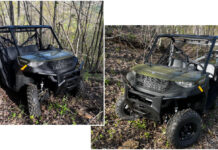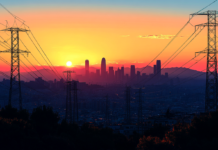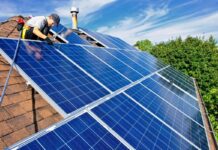I’ve been asking myself if it is time to invest in a solar power system. Right now, I have off-grid water and off grid heat (wood stove), but I still rely on electricity from a third party supplier. I see electricity as the largest threat to our self-sufficiency.
If you are a prepper, you might want to consider solar as well.
Four Reasons
Here are four reasons I am considering solar now:
- Electric utilities and distribution networks are warning of the potential for blackouts and brownouts this year. We’re seeing coal and nuclear plants disappearing, and the lack of that generation power is hurting the reliability of our electrical system. As electricity prices rise, the ability to sell power back to the grid might help offset the cost of a home system more quickly. A home solar system with battery backup could provide an alternative source of power when the grid goes down.
- The cost of solar equipment has been dropping for years, but we may have reached the bottom. Because of inflation, rising commodity prices, and problems shipping things from China, costs might head upward. In other words, buying right now could net me the lowest price we will ever see.
- The technology has reached a point where they have eliminated many of the bugs. Plus, solar panels are relatively powerful and efficient. We may see future efficiency gains, but I don’t know if these will result in a lower cost-per-kilowatt. If there is some remarkable technological jump, I can upgrade or even replace our panels at a later time.
- In a TEOTWAWKI situation, having some solar generating power available will make it more pleasant to live in a post-disaster scenario. At minimum, it would provide lighting and communications. With good planning, we could also have refrigeration and possibly wash a load or two of clothes. If our system is large enough, we might have hot water and electric cooking capabilities as well.
Lithium Ion Batteries
The development of reliable, cost effective lithium ion batteries, especially lithium iron phosphate (LiFePo4), is a tremendous benefit over the traditional lead-acid batteries used in older solar systems. Deeply discharging a lead acid battery would drastically shorten its life. With the LiFePo4 deep cycle batteries, that is no longer an issue. Solar systems built on these batteries can withstand 5,000 full discharge/recharge cycles and retain at least 75 percent of their storage power. That gives you a usable life in excess of ten years. They are also maintenance free and have an excellent safety profile.
The cost per kilowatt for LiFePo4 batteries continues to drop. They are available in 12 volt, 24 volt, and 48 volt. They be used in series or parallel to provide the power your application needs.
Types of Systems
There are a variety of solar systems, and which to pick depends very much on your budget and your power needs. Obviously, providing solar power at a hunting cabin is going to be cheaper and less complicated than a four-bedroom home or setting up a system that can recharge your electric vehicle.
Here are options I have considered:
A Large Solar Generator
Solar generators are those self-contained portable boxes that include batteries, inverter and solar charge controller all in one. They usually have a number of AC, USB, and DC power ports and can be charged by solar power or AC current. These were originally promoted for camping or van life, but as their capacity grew, so did their applicability for use in the home. The EcoFlow Delta Pro, for example, has 3600 watt output and a 3.6 kWh battery. You can expand the basic unit by adding extra batteries or even using two together to get 240 volt power. They are not cheap. A unit costs $3,600, and that does not include solar panels.
This system would allow us to run the washing machine once or twice per day, run the refrigerator, keep on the lights in the main room and recharge all our portable devices. It might allow for limited use of the microwave or toaster oven.
EcoFlow offers smaller units, as do companies like Jackery, Bluetti and dozens of others. If I lived in a small off-grid cabin, a 1.5 or 1.8 kWh unit would probably be sufficient. For my needs, however, even the Delta Pro would not come close to powering the house. We’d need two units plus two additional batteries if we wanted to run any of our 240 volt appliances such as the hot water heater. We’d want to use only one stove burner at a time and skip running the clothes dryer.
Also, to recharge that much storage capacity, we’d need a solar system that put out at least 2,400 watts. Since many days do not have optimal sunlight, we’d need a 3,000 or 3,6000 watts in panels, which would need a minimum of five hours of sun per day. If we get a few days of clouds, rain or snow, we’d be without electricity.
A Stand-Alone Solar System
By the time you go to all that trouble and cost of hooking up multiple solar generators and ten or twelve large solar panels, we might as well get a standard system and wire it into our house. The result should be a more robust system at a lower cost.
I’d build a system with something like a Growatt inverter, a stack of 100-amp-hour 48-volt lithium batteries, and at least 3,600 watts of solar panels. I’d size the inverters to accommodate additional batteries and panels in the future, should I find the system needs more power after installation. It would also be a good idea to upgrade my gasoline generator to better charge the batteries for long periods without sun.
The challenge with any solar system is that we have an electric stove and an electric oven. That means the output must be high enough to allow us to cook Thanksgiving dinner, even though we use the oven no more than twice a week under normal living conditions. In addition to the inverter producing enough 240 volt power to run the stove and oven, which use a 40 and 50 amp circuit breaker respectively, we have to either have enough stored power to run the stove for several hours or turn on the generator any time we run the stove.
The advantages of a whole-house system is that it is whole-house. We won’t have to run extension cords or pick which circuits to use.
A Grid-Tied System
Similar in size to the stand-alone solar system, the grid tied system allows us to use solar power or grid power, depending on our demand. It also allows us to sell excess power to the power company. On those bright, sunny days when we are generating 3600 watts and using 500, we can sell 3,100 to the power company. Those few times when the oven and two stove burners are running because we have company, the system uses power from the grid and we don’t have to start the generator.
To save money, many grid-tied systems don’t use batteries. For the prepper, that is a mistake to avoid because you have no backup power without batteries. It is also a mistake to buy a system that needs a 24/7 internet connection. If you expect your system to generate power after a SHTF even, you want it to work even when the grid is down and the internet is a faint memory. So choose carefully.
Done properly, I think this kind of a system would be best for us. It would allow us to start with less storage, since we’ll be relying on grid power. During a power outage, we could plug in our generator, just like we do now, but besides powering our refrigerator and freezer, it can charge the batteries, giving us power even when the generator is off. When the storm passes, we could rely on solar instead of the generator.
Solar, Worth a Second Look
I may price out some systems. Anything would be an improvement over the single-battery and 100-watt panel we have now.







